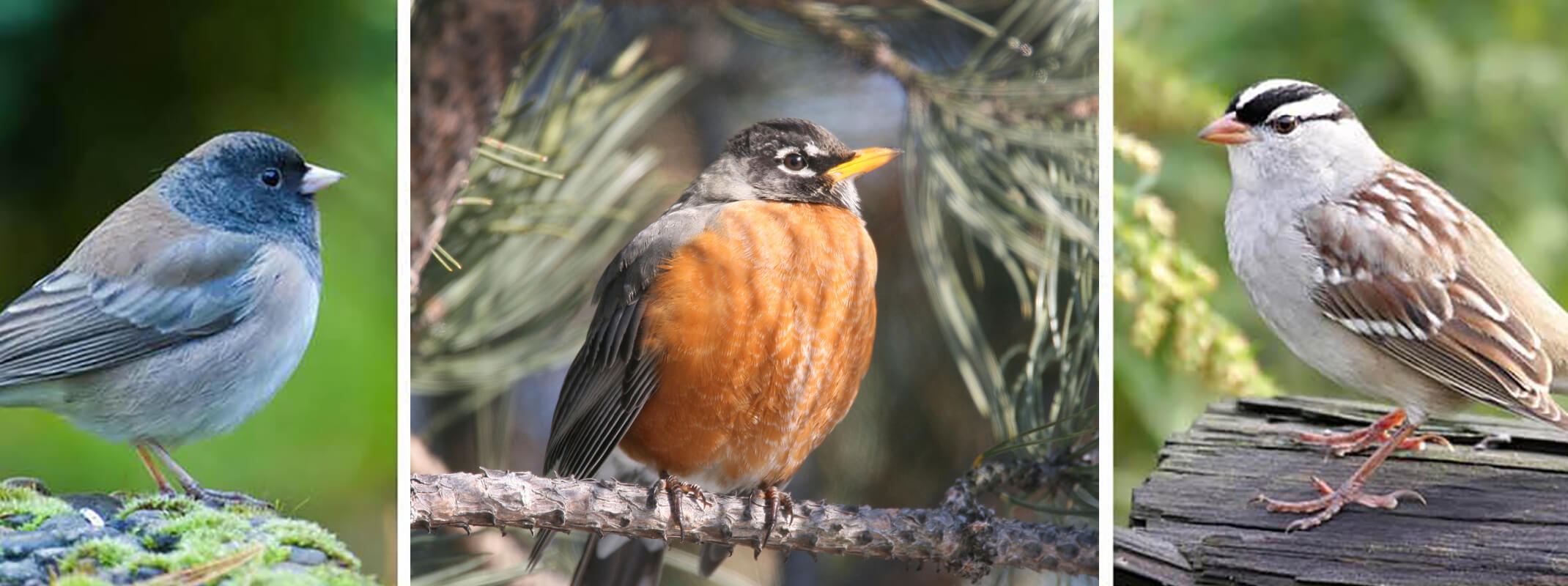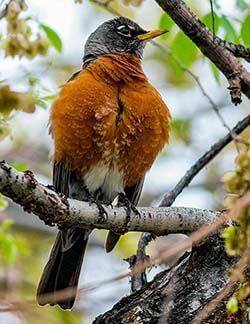Invite The Birds To Your Garden

Inviting birds to your garden brings vitality and entertainment to your landscape. Birds’ requirements are few: food source, water and shelter in the form of beautiful plants.

Food & Water
Birds are savvy at finding their own nourishment through nature’s fruits and seeds, drinking nectar, eating insects, rodents and even other small birds. The right plants in your garden will provide food (or habitat for critters) for the birds to eat.
Feeders can provide supplemental food, whether seed or nectar. Fresh water for drinking and bathing is a necessity for a flourishing bird habitat. Birdbaths are a decorative way to meet the needs of our flying friends,’ keeping in mind the importance of replacing the water regularly.

Shelter
Birds will find shelter in trees, shrubs, crevices and the hollows of decaying logs. They will appreciate the shelter you can provide in the form of a birdhouse – from a simple utilitarian box with an entrance opening to a wide assortment of charming architectural wonders. Be sure to hang it in a place that is difficult for predators to access.
Bird Loving Plants
We have a selection of beautiful perennials, shrubs and annuals that will not only look great in your California Landscape, the birds will happily flock to them.
List of Plants That Attract Birds
Bird-Friendly Plant Maintenance
Every spring and summer, gardeners prune and clear trees and shrubs of brush accumulated over the year; sadly, this occurs when many birds nest, destroying nests, killing birds and reducing nesting sites.

Encourage Nesting:
- Prune trees and shrubs from September to February during plant dormancy, minimizing disturbance to nesting birds and lessening stress on your plants
- Leave nests (even empty nests) undisturbed to accommodate future new eggs and chicks; many birds reuse nests and nest outside of the spring and summer time frame
- Never move or touch any nest, eggs or young birds you may find; parents may abandon disturbed nests, leaving their babies to die. Stop work in proximate areas until the young have fledged on their own (can take up to 4 weeks)
Protect them through safe practices

Protect them through safe practices – Birds poisoned from pesticides, fungicides and rodenticides don’t typically die right away; they bring back the poisoned food to their nesting young. Hatchlings eat the poisoned food, killing them as well. This could cause devastation to that species population. Even when using safer products for birds, be sure to follow the guidelines below to help minimize impact to birds and other wildlife:
- Do not spray on windy days to limit overspray
- Never spray open flowers – spray just before bud break
- Spray at dawn, dusk or at night when bees are less active
- Systemic insecticides translocate to flowers and can harm pollinators
- Use traps instead of poisoned bait for controlling rats, mice and other rodent pests (birds, pets and other wildlife that eat poisoned rodents die or become very ill)

Awake to birdsong!
Providing necessities for bird survival gives you the added benefit of hearing the cheery voices of birds in your garden. Enjoy the show!
Other Pollinators...

| Create A Butterfly Habitat | Create A Hummingbird Habitat | Creating A Bee Habitat |
| Plants to Attract Butterflies | Plants to Attract Hummingbirds | Plants To Attract Bees |

